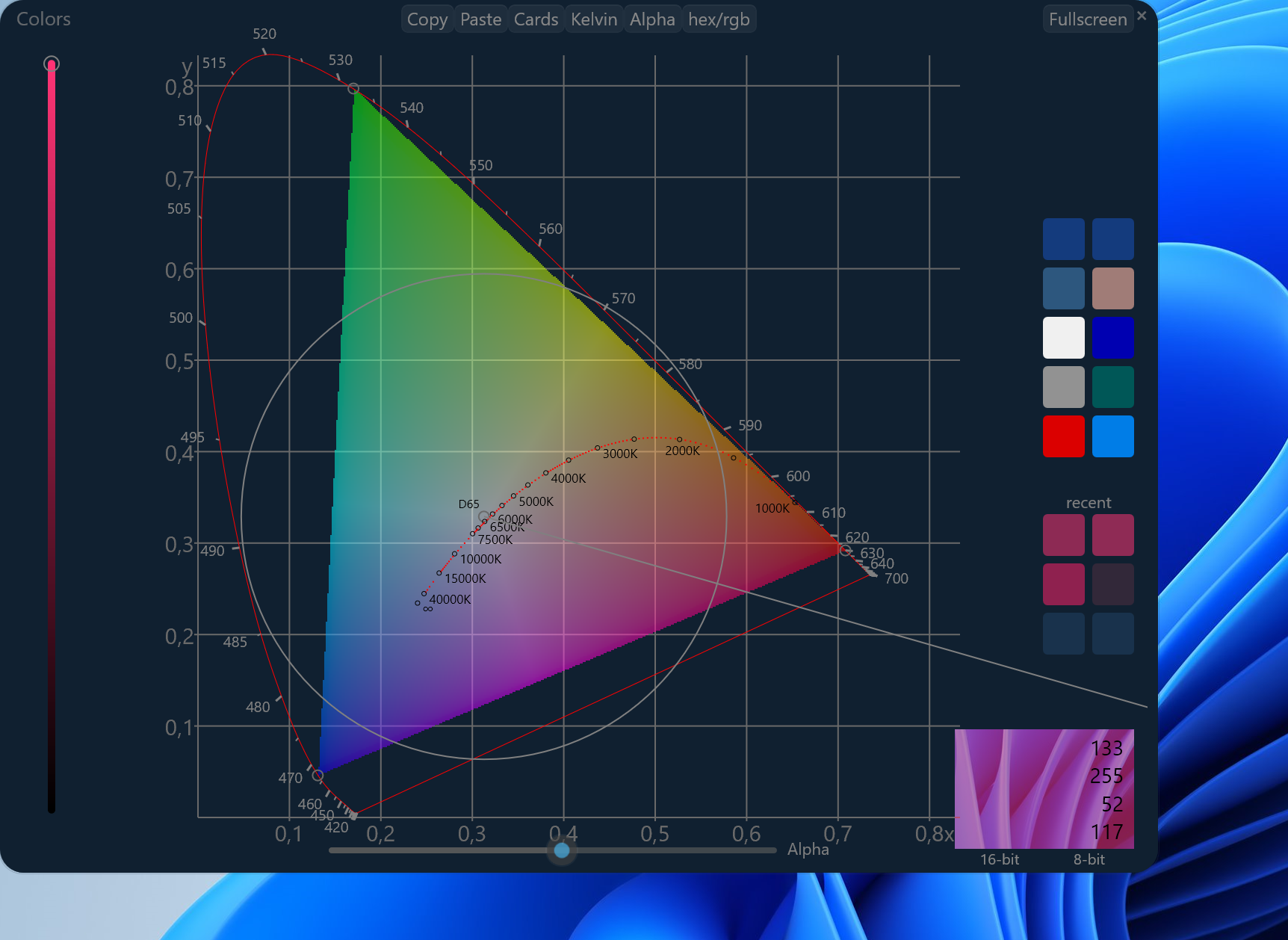Twelve gadgets enhance your daily life
Colors
Color picker based on human perception
Color picker that arranges colors the way the human eye perceives colors.
Physically correct with wavelength, CIE 1931 XYZ specification, and hex and RGB support.
This arranges colors
by physiologically perceived colors, based on human color vision.
We take real-world color wavelengths and calculate them into RGB triplets.
RGB to Wavelength
The color triangle follows the actual rec.2020 specification for your monitor on how to draw a color.
Each pixel you see has its color calculated to match the wavelength at that particular x,y-coordinate.
The line from the center crosses the spectrum line (the red horseshoe)
exactly at the wavelength of that selected color.
- New: full alpha support
- 8-bit, 12-bit or 16-bit colors
- Hex, RGB, or floats between 0.0 and 1.0
- Color cards for similar colors
- color wavelength in nm
- Kelvin line integrated over the visible spectrum using Planck's radiation law
- rec.2020 and sRGB
Free up the color triangle, remove the grid,
and change resolution and background.
+ change resolution
+ adjust grid, spectrum, and Kelvin line
+ remove background
+ adjust grid, spectrum, and Kelvin line
+ remove background
12Gadgets:
Backup |
Black |
Browser |
Clock |
Colors |
Light |
Moon |
Photos |
Protect |
Sleep |
Time |
Volume



